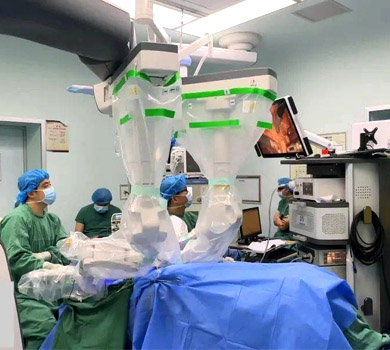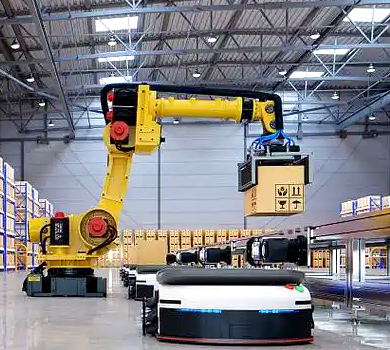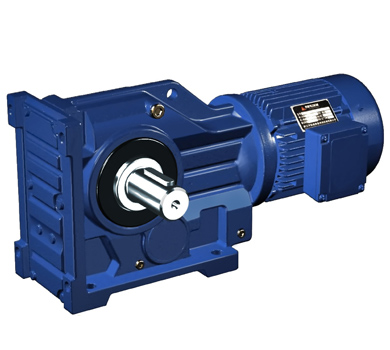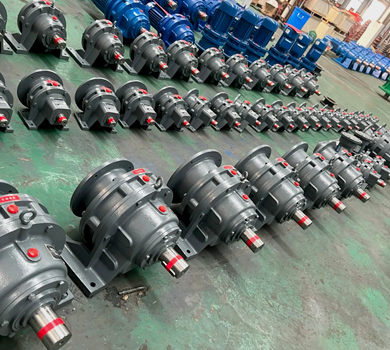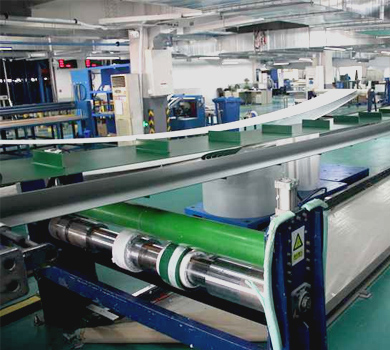Injection molding automation is a key enabler of high-volume, precision manufacturing in industries such as automotive, electronics, and medical devices. Among the many components involved in the process, core pin positioning robot rotary systems play a critical role in ensuring accurate, repeatable motion and high throughput. These systems demand robust and high-performance transmission components, particularly speed reducers, to meet the stringent requirements of speed, precision, and reliability.
This case study explores the application of Waimica's mechanical continuously variable transmission (CVT) technology in solving the challenges faced in core pin positioning systems, while delivering an alternative with superior cost-performance, compactness, and adaptability.
1. Industry Challenges and Pain Points Analysis
The core pin positioning robot rotary system is typically part of a multi-axis robotic assembly unit used in injection molding to insert or reposition core elements during the molding process. The system must operate under high-cycle, high-precision, and often high-temperature conditions to maintain production efficiency and product quality.
- Typical equipment components: Servo motor, speed reducer, robotic arm, positioning sensor, and PLC control system.
- Current trends: Increased demand for modular, compact, and high-efficiency systems with lower maintenance costs to support lean manufacturing and Industry 4.0 integration.
However, the industry is still facing several critical challenges:
- High torque and compact design conflict: Traditional gearboxes often require large space and are difficult to integrate into confined robotic joints.
- Thermal sensitivity: Some speed reducers are not designed to handle the elevated temperatures generated in injection molding environments, leading to premature wear and failure.
- Poor response speed and backlash: High precision is essential, but many existing solutions suffer from lag and hysteresis during high-frequency movements.
- High maintenance frequency: Bearings, gears, and other mechanical parts tend to degrade quickly in harsh environments, increasing downtime and operational costs.
- Limited adaptability: Customization options for mounting, interface, and performance tuning are often limited in off-the-shelf solutions.
2. The Critical Role of Speed Reducers and Technical Requirements
Speed reducers in core pin positioning systems are crucial for translating high-speed motor input into controlled, precise rotational motion. The technical requirements for these systems are particularly demanding:
- High torque density: To handle the forces required for accurate positioning under load.
- High precision and low backlash: Ensuring repeatable motion and product consistency.
- Fast response speed: Essential for high-cycle operations with minimal latency.
- High compatibility: Must support various motor types and mounting configurations.
- Environmental adaptability: Must operate reliably in high-temperature, high-humidity, or cleanroom conditions.
- Long service life and low maintenance: Reducing system downtime and lifecycle costs.
3. Waimica's Mechanical CVT Speed Reducer Solution
Waimica's mechanical CVT speed reducer is specifically engineered to overcome the challenges of injection molding automation. The following features directly address the pain points of the industry:
- High torque density and compact design: Achieved through advanced planetary gear and optimized housing structure, enabling integration into tight robotic joints.
- High precision and zero backlash: The CVT mechanism ensures smooth, backlash-free motion with high repeatability, ideal for high-precision applications.
- Fast response and dynamic performance: Mechanical CVT technology allows for rapid and precise adjustments, reducing motion lag in high-speed operations.
- Robust environmental tolerance: IP65/67 rating, heat-resistant materials, and sealed lubrication systems make it suitable for operation in high-temperature and high-dust environments.
- Modular and flexible installation: Multiple input flange options and mounting styles allow for easy integration into diverse robotic platforms.
- Long life and low maintenance: Bearings and seals are selected for extended service life, with maintenance intervals typically 2–3 times longer than conventional solutions.
Below is a comparison of Waimica's mechanical CVT speed reducer with a leading international brand in key technical parameters:
| Parameter | Waimica CVT Reducer | International Brand |
|---|---|---|
| Torque Range (Nm) | 150–800 | 200–750 |
| Backlash (Arc Min) | ≤15 | ≤20 |
| Efficiency (%) | 88–93 | 85–90 |
| Operating Temperature (°C) | -20 to +100 | -10 to +90 |
| IP Rating | IP67 | IP65 |
| Mounting Options | Flange, shaft, or coupling mount | Flange only |
| Response Time (ms) | ≤50 | ≤70 |
| Lifetime (Hours) | 20,000+ | 15,000+ |
4. Typical Application and Customer Feedback
A major automotive parts manufacturer in Southeast Asia was experiencing frequent downtime and maintenance costs due to gear wear in the core pin positioning system of its injection molding machines. The existing speed reducer had a short service life and could not sustain the high cycle rate of 1,200 cycles per hour required for production targets.
Waimica's technical team conducted a detailed on-site analysis and determined that the primary issues were thermal degradation and mechanical backlash. A Waimica mechanical CVT speed reducer with a 500 Nm torque rating and IP67 protection was selected as a replacement.
Implementation Highlights:
- Custom input flange matched to the existing servo motor to ensure compatibility.
- Sealed lubrication system reduced the risk of contamination in the molding environment.
- On-site support was provided for installation and fine-tuning of the control parameters.
After deployment, the customer reported the following performance improvements:
| Performance Metric | Before Waimica | After Waimica |
|---|---|---|
| Mean Time Between Failures (MTBF) | 8,000 hours | 20,000 hours |
| Downtime per Week (Hours) | 8–10 | 0.5–1 |
| Positioning Accuracy (±mm) | 0.15 | 0.08 |
| Maintenance Frequency | Every 3,000 hours | Every 6,000 hours |
| Cost of Ownership | High | 30% lower |
The customer confirmed that the Waimica solution has met or exceeded expectations, and they are now considering full system upgrades with Waimica components in their upcoming production lines.
5. Conclusion and Waimica Brand Value Summary
Waimica's mechanical CVT speed reducer represents a breakthrough in the field of injection molding automation, combining high torque density, precision, and durability in a compact, modular design. Our solution not only addresses the limitations of traditional gear-based systems but also offers a cost-effective alternative with global engineering support and customization capabilities.
As a high-performance yet cost-efficient provider of "Made in China" industrial transmission solutions, Waimica has proven its ability to replace foreign counterparts without compromising quality or reliability. With the trend toward higher automation and smarter production lines, Waimica is well-positioned to support customers in achieving long-term operational excellence.
Our long-term commitment to R&D, quality assurance, and customer-centric innovation makes Waimica a trusted partner for the evolving needs of the injection molding industry.


